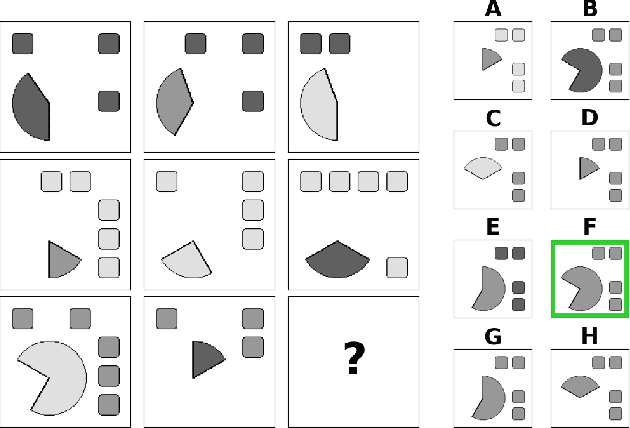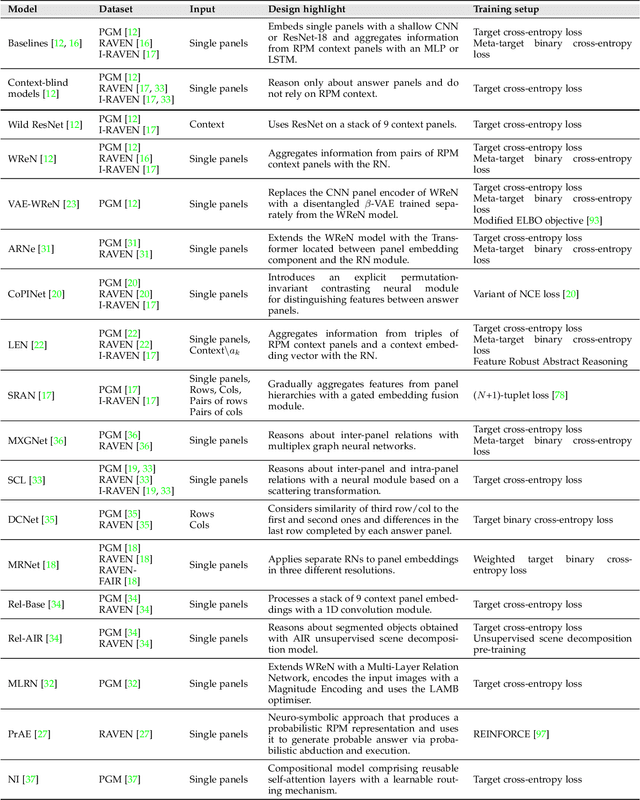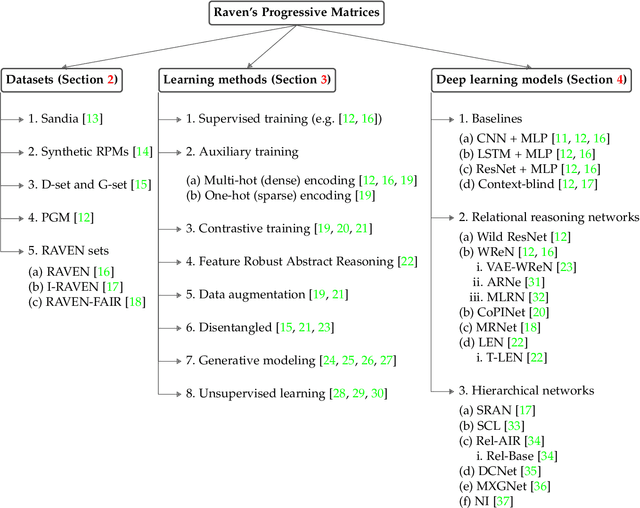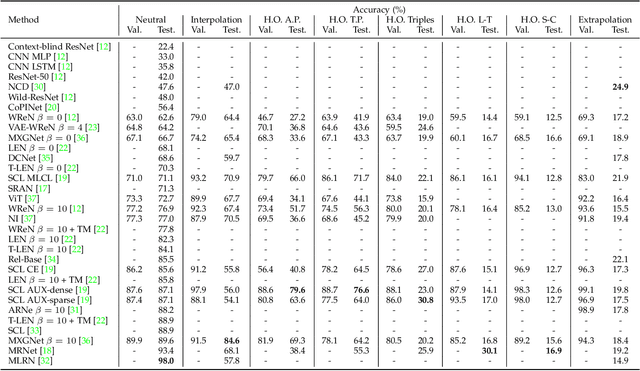Deep Learning Methods for Abstract Visual Reasoning: A Survey on Raven's Progressive Matrices
Paper and Code
Jan 28, 2022



Abstract visual reasoning (AVR) domain encompasses problems solving which requires the ability to reason about relations among entities present in a given scene. While humans, generally, solve AVR tasks in a ``natural'' way, even without prior experience, this type of problems has proven difficult for current machine learning systems. The paper summarises recent progress in applying deep learning methods to solving AVR problems, as a proxy for studying machine intelligence. We focus on the most common type of AVR tasks -- the Raven's Progressive Matrices (RPMs) -- and provide a comprehensive review of the learning methods and deep neural models applied to solve RPMs, as well as, the RPM benchmark sets. Performance analysis of the state-of-the-art approaches to solving RPMs leads to formulation of certain insights and remarks on the current and future trends in this area. We conclude the paper by demonstrating how real-world problems can benefit from the discoveries of RPM studies.
 Add to Chrome
Add to Chrome Add to Firefox
Add to Firefox Add to Edge
Add to Edge